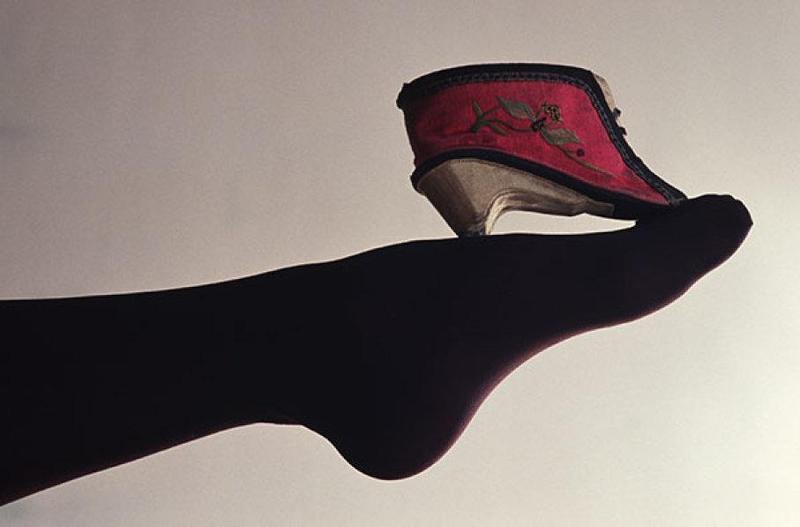Foot Binding
Foot Binding

Foot binding was a practice first performed on young girls in Tang Dynasty China to limit their normal length and make their feet as small as possible. Viewed as an attractive quality, the effects of the process were painful and permanent. Widely used as a method to distinguish upper-class girls from everyone else, and then as a way for the lower classes to improve their social prospects, the practice of foot binding continued until the early 20th century AD.
Process
Chinese girls had their feet tied, usually from the age of five or eight. The process began with the selection of a favorable day in the calendar. Prayers and offerings were then offered to the Tiny-Legged Virgin Goddess; another recipient was the Buddhist figure of Guanyin, a bodhisattva or enlightened one who was believed to protect women in general. When everything was ready, the work was done by older women or professional dressmakers. The big toe was left facing forward, while the four smaller toes were bent under the foot. In this position, the feet were tightly bound with long strips of cloth, which then limited further growth and gave the foot a pronounced bend. After a month, the feet were untied, all the ulcers on the skin were treated, and the foot was restored again. The bonds were loosened and tightened again every month until the girl reached adolescence (or even longer, depending on the desired effect). It was not unusual for one or more fingers to be lost or have infections in the foot or gangrene. Even as an adult, the woman continued to wrap her disfigured feet in bandages, wearing them all the time in public and during bathing.
Results
The end result of a long and painful process was to have feet no longer than 7.5-10 cm (3-4 inches) when they were known as jinlian - “Golden Lotus” or “Lotus” feet after the central life symbol of Buddhism. The smaller the feet, the more attractive they were; even more, erotic for some, and this was a clear sign of elegance. The same was true of the style of walking that the woman with her feet tied now had to adopt-small, light steps. With servants doing menial work, the lady’s mobility was limited even under normal circumstances, but with her feet tied, walking was only to be achieved with great difficulty. Small feet required particularly elegant shoes, and such shoes, made of silk or cotton and often beautifully embroidered, were found in abundance in the tombs of upper-class Chinese women.
Historical origin and distribution
The practice of tying the feet may have begun with the Yaonyan dancer who performed at the Tang Dynasty court, or more generally, the Turkic dancers who performed there during the 10th century AD. These dancers were known for their small feet and “ butterflies” with upturned toes. The first mention in historical records refers to the time when the Tang court was located in Nanjing between 937 and 975 AD.
Be the first to post a message!